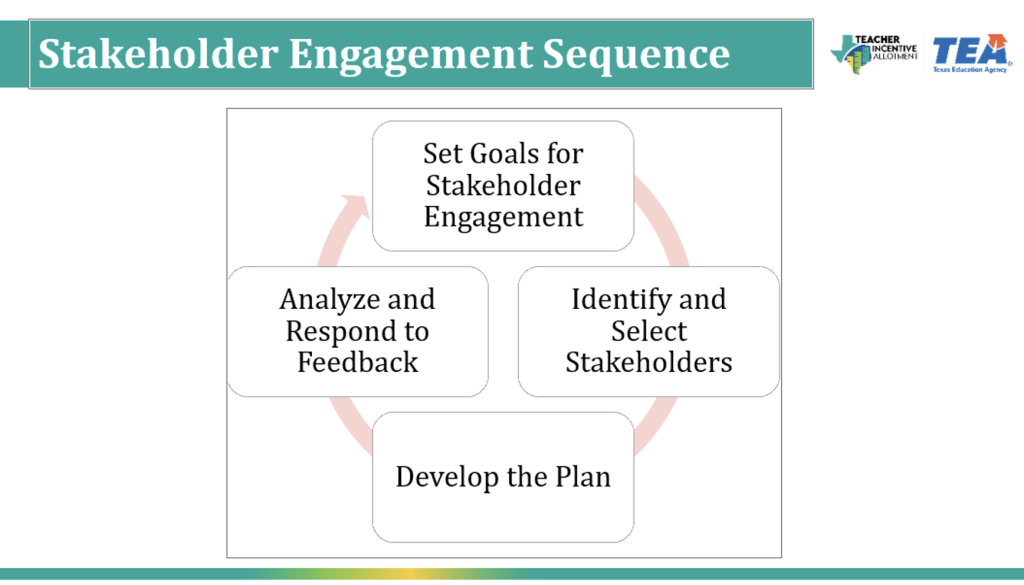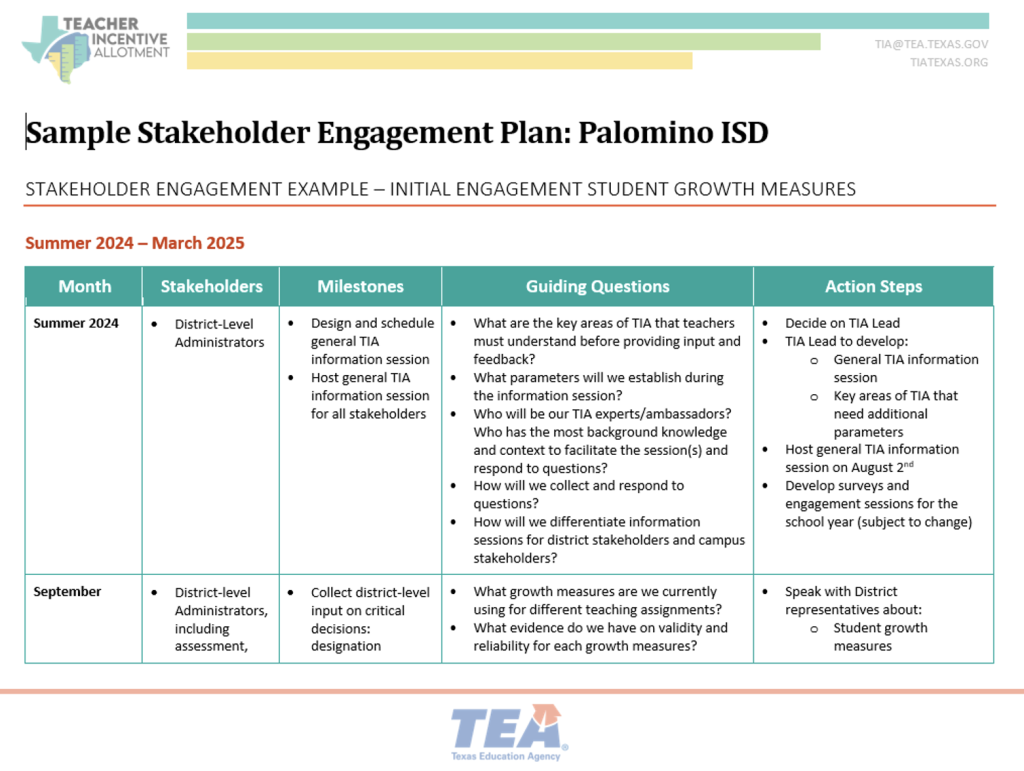Stakeholder engagement is essential to implementing the Teacher Incentive Allotment (TIA). TIA’s success and sustainability rely on transparency, trust, and meaningful collaboration.
Collaboration Counts
When districts involve stakeholders early, they create stronger alignment with TIA priorities and build greater trust and support among teachers through their local designation system. When done successfully, this can support TIA’s goals of recruiting, retaining, and rewarding educators.
The TIA stakeholder engagement sequence (shown below) is a fluid process that ensures key voices are heard and included throughout implementation. Through surveys, committees, and focus groups, districts gather input on student growth measures, teacher evaluation systems, and designation criteria. District leaders strengthen their TIA process when they keep conversations about data validation, expansions, and modifications going with stakeholders after the plan is submitted. This ongoing collaboration and communication build trust and sustainability.

TIA Stakeholder Engagement Plan
A stakeholder engagement plan should be in place during the application year. A stakeholder engagement plan helps by providing a clear, structured approach to involving key stakeholders. Communication and collaboration become intentional and strategic rather than an afterthought or coming up with decisions on a whim.
A stakeholder plan is beneficial because of the diverse perspectives that help identify potential gaps or biases in the designation system. This plan also welcomes ongoing feedback, allowing districts to adjust their system as they go through the process.

Trust and Transparency
Engaging stakeholders (teachers, administrators, etc.) helps build trust in the TIA process. When people understand how decisions are made and how incentives are awarded, it reduces suspicion or resistance. Trust and transparency provide clarity for everyone. When teachers and staff clearly understand how decisions are made, they are more likely to trust the process. When educators feel that their voices are heard, they are more likely to support the system and stay committed to its success.
Identifying Key Stakeholders
Key stakeholders can include campus and district administrators, human resources personnel, teachers, the school board, and community members.
Campus and district administrators are responsible for ensuring that the system is fair and aligned with TIA and district goals. Human resources oversees compensation plans and compliance. Teacher input is essential as it affects their professional development, evaluations, and compensation. Their voice matters, especially during the implementation stage. School board members must ensure that the TIA goals align with the district’s goals and policies.
Community members’ feedback helps ensure that the system prioritizes student success and that the teacher reward system is fair and meaningful. Engaging all stakeholders builds trust, transparency, and buy-in and creates a sustainable TIA system.
Sustainability
Ongoing stakeholder engagement support ensures that the system remains reliable, relevant, and fair over time. It also ensures adjustments are made as policies, data, or needs evolve. Without stakeholder engagement, a TIA plan can be misaligned with teacher realities, leading to frustration and poor implementation, resulting in a lack of teacher buy-in.
When stakeholders are engaged, it becomes a collective and collaborative effort to recognize and reward excellent teaching in a way that improves retention, equity, and student success.
Conclusion
Collaboration is the key to stakeholder engagement in implementing the Teacher Incentive Allotment. To learn more about TIA, visit the ESC Region 13 website. Our blog has more articles about TIA.
Camela Guyton is a TIA Assessment Specialist at ESC Region 13.






Add comment